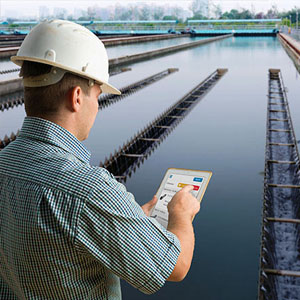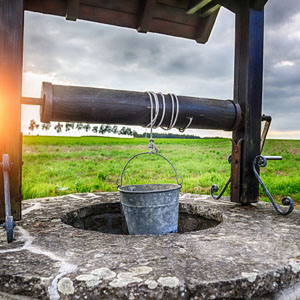What is Drinking Water?
Drinking Water (Potable) is the most important water because it protects your health.
“Potable” water meets the minimum standards set by the EPA for consuming. There are actually thousands of different contaminants, and roughly 80 have limits set by the EPA, although most of those are non-enforceable. The reality is that all water, regardless of well water or municipal needs to be the best quality possible when it directly affects your health. The destruction of household plumbing, fixtures, and appliances is insignificant compared to the damage to Health. Our bodies are over 60% water, and we can only survive 3 days without it. Water allows our bodies to survive, organs to function, muscles to contract, and the brain to operate.
There are many options out there in the drinking water industry, and there are a lot of fads and scams trying to get a share of the multi-billion dollar bottled water business. There is a breakdown below of the major points, but the main goal is to purify the water and add options to your preference. This is the only way to ensure and protect your quality. Reverse Osmosis, distillation, and Deionizing resins are the only feasible methods of purifying.
- Reverse osmosis uses the least amount of energy and provides reliable quality in every situation from an under-sink unit to units that produce millions of gallons per day for cities and ships.
- Distillation requires a lot of energy to boil water, and then the steam is collected.
- Deionizing resins acts like magnets, grabbing everything dissolved in the water. This is practical in a medical or laboratory setting where ultrapure water is required but maintenance is extremely expensive and space is large for a whole house system. There are some countertop pitchers that claim to get the water to Zero but they come with a TDS meter that must be monitored or they will dump all the contaminants after a certain point is reached. They effectively poison you if you aren’t being careful.
We use Reverse Osmosis because it is reliable and can fit under a sink in most situations. The Kinetico K5 can also be connected to a fridge which eliminates the need to buy fridge filters.
There are a few basic categories of water:


Tap water
Also known as “Municipal Water”, has typically the same levels of chlorine as a pool. It also has ammonia in about 30% of municipal systems in America, which is also a common item found in pools. (Especially public pools, left behind by people.) Tap water meets the minimum standards set forth by the EPA, but typically we would like to have a far better grade than the same water used to flush toilets. The source can be rivers and other surface waters that have little protection from pollution. Many cities are implementing reverse osmosis systems but even with perfect water at the beginning it still has to be chlorinated and goes into older distribution systems to get to the houses. Basically it is the homeowner’s responsibility in each home to raise the level to the standards that we should all demand.
Well Water
Well Water is merely water being taken out of a hole in the ground. A well owner is considered a private water source and there aren’t any regulations in place that mandate the quality of any well. Water quality can vary (sometimes significantly) at different times of the year depending on rainfall and other geological factors, and the chance of bacteria being present is over 90% on all wells if regularly tested. The old mindset of “my water is perfect because I have a well” is flawed because the water always comes from somewhere that you have zero control of. ALL Well water needs to be evaluated and tested regularly OR steps need to be taken for the protection of the drinking water. Consider this, if anyone upstream of your water flow contaminates it (pesticides, bleach, fertilizers, motor oil, gasoline, fluoride pellets, etc.) you will eventually have it in your water supply.
Shallow Wells are “dug wells” or “Bored Wells” and are wider holes that utilize Surface-waters to maintain water tables and are very prone to contamination due to runoff and disposal. The water is typically very acidic since the water hasn’t had a chance to run thru mineral deposits and as very aggressive towards metals. Well pumps over 10 years old still contain lead and can be toxic to your health. Bacteria is very common in these due to the way they refill.
Deep Wells are done by Drilling, and go thru rock layers that cannot be penetrated with a Bored well. These tap into underground aquifers and can have source water that can travel hundreds of miles. Most modern wells are done this way and we see them being consistent for long periods of time, and then activity like the earthquake in August 2011 here causes the water to shift, sometimes dramatically. These wells are more reliable in times of drought, but still vary in water level, which can cause seasonal odors, colors, and pathogens. There have been actual homeowners that toss fluoride and chlorine pellets into their well regularly because they “heard it was a good idea”. Intentionally poisoning the groundwater is reckless and endangers the health of every house on that water.
Drinking Water options include the following:
- UV Sterilization to eliminate the danger of pathogens without chemicals or any alteration of the water taste. This method does NOT make the water better aside from the filtration of 5 micron it employs,
- Carbon filtration is used to make the water taste and smell better, as well as filtering out some contaminants like Iron, VOCs, Chlorine. The dissolved contaminants are still present in the water but the taste-test seems to convince folks that the water is pure. An example is the fridge filter, and you can easily test the Total Dissolved Solids (TDS) against the tap water to see that there is no difference.
- Reverse osmosis reduces everything in the water to almost zero except gases. All professional systems include carbon treatment for the gases so the final delivered water is reliably pure. This is the ideal water for cooking, drinking, cleaning, and can be added into additional processes like mineral filters which can raise the pH and provide a different “Mouthfeel”. A comparison to bottled water is that Carbon filtration is “Spring Water”, and Reverse Osmosis is “”Purified”, and Reverse Osmosis plus a mineral filter is “Purified with minerals added for taste”.
Regardless of your personal preferences, Please do something to invest in your health with a drinking water system.
Your Contractor has selected the Kinetico products because they have the following advantages for you:
- Best warranties in the industry, with 10 years on most products with no pro-ration and they are fully transferrable to the new owner if you relocate.
- Over 50 years of manufacturing in the USA since they were invented in 1970, and the Advanced Water Systems Dealership has been fixing water since 1986 as their exclusive Authorized Dealer for this area.
- Products that are the most efficient in the industry, with options that are customized for each application.
- Pricing that is transparent and very competitive, not based on "How much can we get".
- Local Dealer office ensures fast and professional service, and dedication to customer satisfaction is evident on any Google search.
- Dealership is currently the largest in the world as of 2021, ensuring the promises and warranties will be honored forever.
Please let your Contractor know if you have any additional questions or concerns with your water, and for more information on specific products please visit us at: https://kineticorichmond.com/products/